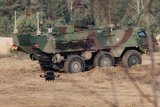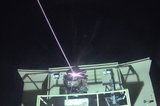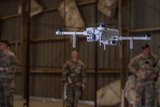What role could holographic and 3D capabilities play in the warfare of tomorrow
The NOVAC table display. (Photo: Avalon Holographics)
Better visualising the scenario of deployment and the threats it may pose before arriving in the theatre of operations is among the main reasons military services across the globe have been interested in deploying holographic and three-dimensional (3D) capabilities in training, simulation and planning.
As a single synthetic environment can prepare air, land, sea, cyber and space warfighters for multidomain missions, the technology has demonstrated that it can facilitate predicting adversaries’ manoeuvres while improving situation awareness and command and control.
A report issued in August 2024 by the US Government Accountability Office (GAO) stated that 3D holographic objects, when combined with
Already have an account? Log in
Want to keep reading this article?
More from Defence Notes
-
![NATO experiments with solutions to integrate networks, AI and uncrewed systems]()
NATO experiments with solutions to integrate networks, AI and uncrewed systems
During the latest edition of the NATO DiBaX, the alliance tested multiple capabilities to inform requirements for future efforts.
-
![Leonardo unveils plans for Michelangelo air defence dome]()
Leonardo unveils plans for Michelangelo air defence dome
The new multi-layered defence system will harness AI to neutralise airborne threats and protect Europe from Russian aggression.
-
![What will next-gen counter-UAS capabilities for the US look like?]()
What will next-gen counter-UAS capabilities for the US look like?
Future US counter-uncrewed aerial system solutions are likely to require a flexible, multi-layered approach to tackle a broad spectrum of new threats as they emerge.
-
![Elbit Systems awarded $2.3 billion contract as results soar]()
Elbit Systems awarded $2.3 billion contract as results soar
The company’s order backlog as of 30 September totalled $25.2 billion and more than a third of this is scheduled to be fulfilled before the end of 2026.
-
![US military foresees growing use of 3D printing]()
US military foresees growing use of 3D printing
Advanced manufacturing has evolved to meet military requirements and now supports multiple US critical assets, including Arleigh Burke-class destroyers, F-18, F-22, F-35, Bradley, HMMWV and Patriot.
-
![Irish Naval Service expands as the country looks to defence during EU presidency]()
Irish Naval Service expands as the country looks to defence during EU presidency
The Irish Naval Service has struggled to maintain capability, particularly in the face of lucrative private sector offers luring away personnel.
























